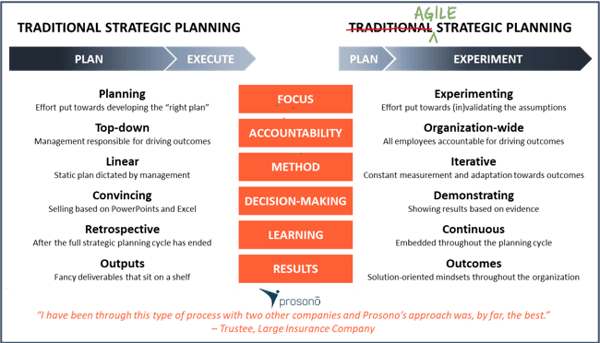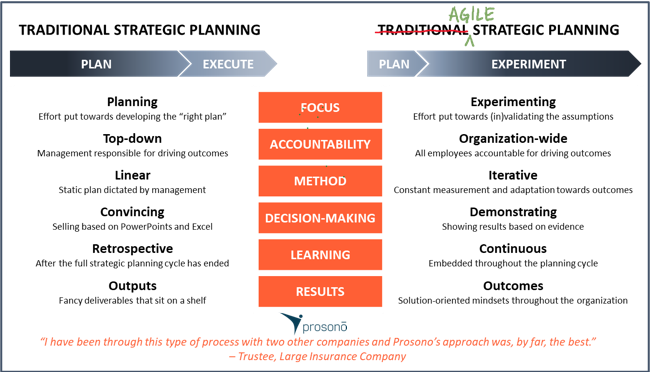Our Case for Agile Strategic Planning – New reality, yesterday’s data

The last 5 months have undoubtedly changed civic consciousness and business operations. The global health crisis has caused every business, large and small, to realize they need a new way to engage with their customers, clients, and employees when their assumptions of the market and the world completely change in the matter of a weekend. Many leaders find themselves looking backwards at "what was" to make decisions going forward. They are getting stuck because they know yesterday’s truths are now obsolete.
We have found that this feeling of “stuck” transcends industries and sectors. It impacts across organizations and within organizations. It impacts how we engage in decision making and how we prioritize the needs of our employees and our community verses the needs of our business survival. And, what makes addressing this challenge particularly uncertain is that the systems, processes, models, and data we typically rely on has become obsolete.
A striking example of this came in a recent announcement by the Chinese government to halt its decades old process for nation planning, citing that their existing data was completely inaccurate and irrelevant to help predict and plan. And, honestly, if we stop for a minute to think about it, this inability to plan without data in our current organizations makes sense. We have spent the last 20+ years building planning systems with reasonable assumptions built into our data and model(s) and leveraged these systems to hone our thinking and strategy. In discussions with our clients, we find them seeking to re-think their planning process and seeking to find new data or even make decisions and actions without data. Many are continuing to use instinct as the decision-making model in absence of data, but others are wanting a way to create meaningful, actionable data to augment the instinct or board-room brawl approach.
Prosono’s 20 years of experience in strategy development has made clear many clients use strategy development assuming 2 core principles: (1) Obtaining the most accurate data to the unique circumstances of the business is critical; and (2) strategy defines execution. At Prosono we call this strategy development model "Predict and Prescribe." It is a model that uses past and (previously) accurate data and assumptions to prescribe, fix, or adjust a path forward for the future. To learn more about the challenges of predict and prescribe, check out our post on the model.
In the current environment, and quite likely for an extended time in the future, the data and trends many have used and relied on to "predict and prescribe" will not be accurate enough for businesses to plan and develop their future approach or strategy. For clients that have been using this model we often get asked: how do I complete strategy without yesterday's data? How do I complete strategy with the people and resources I have today? Is there a different way to approach strategy? The answer to all of these key questions is YES!
At Prosono, we have leveraged our background in agile development to create an agile strategic development model as part of our Organizational Agility service. We believe all organizations, particularly in today’s environment, need an "agile" strategic planning process that is iterative, rooted in outcomes, and procures data derived by learning about current assumptions and initiatives in relation to the current environment. This process assumes uncertainty and seeks to create clarity while leaning into where the most value is being created by your business. This model also takes the burden off senior leadership that was previously responsible for prescribing the strategy and pushes responsibility throughout the organization to those that traditionally execute the strategy. Prosono calls this "Agile Strategic Planning."
For more information on Organizational Agility for Non-Profit organizations check out our past blog post here.
